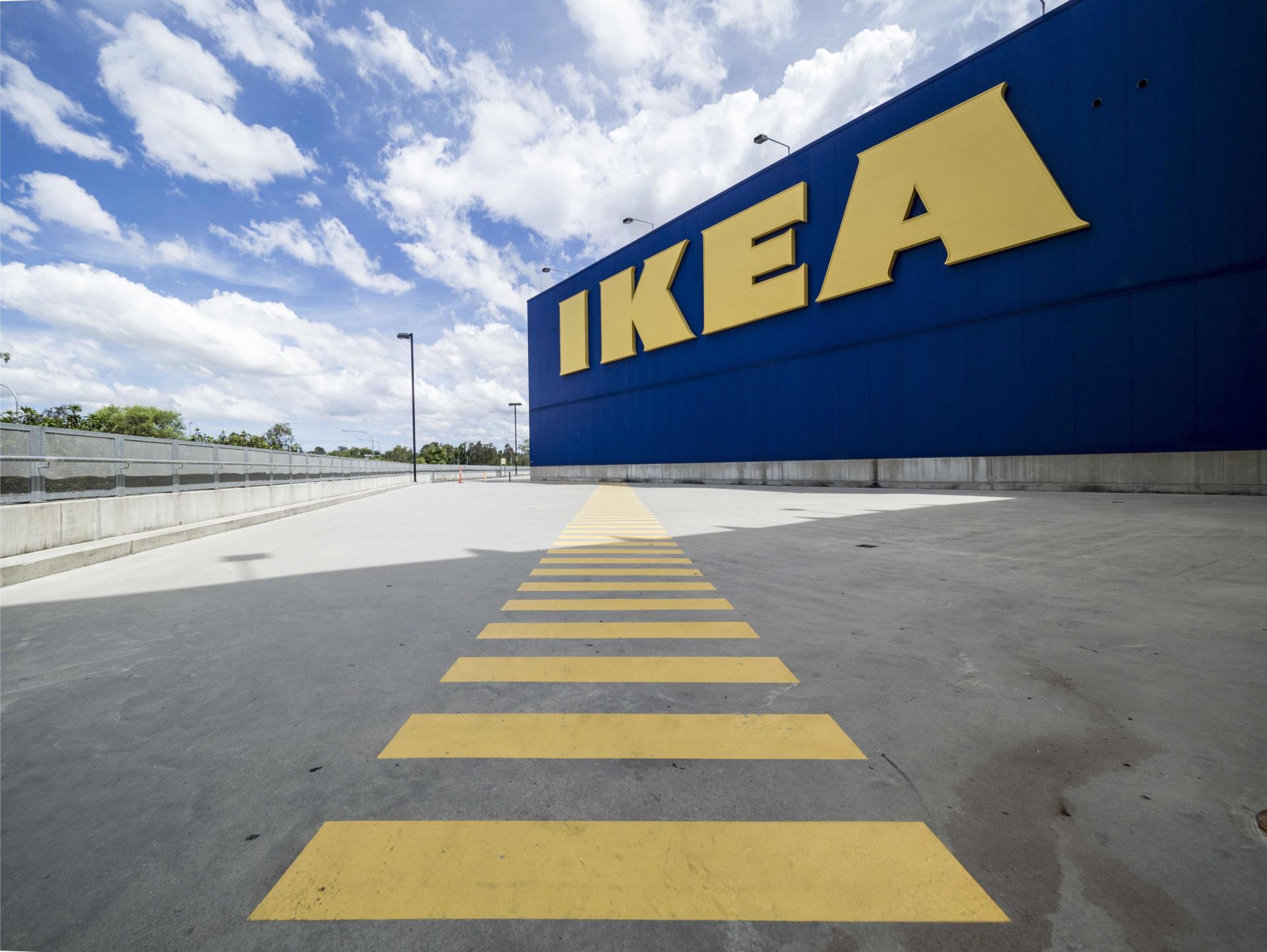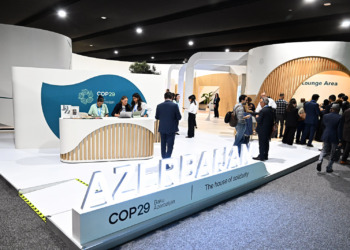The Impakter Index analysis reveals Ikea’s lack of transparency is preventing them from being truly sustainable
The “big Ikea trip” is something most of us are familiar with. Imagine leaving the marketplace without grabbing an unnecessary houseplant, “Kottbullar” (Swedish meatballs) and a “Lack” table. It’s conventional wisdom that the “Lack” range, and Ikea’s furniture on the whole, is inexpensive and built for now, rather than forever (and think of all the impromptu pandemic renovations). On the flipside, Ikea has climate positive ambitions, sources recycled materials and produces its own renewable energy.
In spite of Ikea’s eco-messaging and feel-good policies, The Impakter Index analysis revealed that the brand’s sustainability efforts are mediocre, giving it a C rating. The analysis considers company activity, targets and progress, as well as certifications, awards, and UN Sustainable Development Goals (SDGs) compliance.
Ikea has a successful consumer messaging model; people know it for “the wonderful, everyday,” but the company’s advertising also challenges the viewer to think. The most recent example promotes the idea of the circular economy, something that Ikea wants to integrate into its business by 2030.
Ikea’s environmental messaging also features prominently in the press coverage it gets. Forbes reported that Ikea has massively rethought their retail model, transitioning to a “multi-tiered network” of stores in urban locations, pushing new eco-initiatives and moving sustainability to the top of their agenda. Moreover, The World Economic Forum recently had Ingka Group CEO (the company that owns and operates Ikea retail) Jesper Brodin in conversation, and the Financial Times reported that Ikea has “committed $250m to seed a sustainable equity fund,” demonstrating long term commitment to sustainable development. Clearly, Ikea has no issue garnering favourable media interest, but some commentators have been more sceptical of the Swedish flat-pack specialists.
Recent criticism has been levelled at Ikea’s latest recycling policy that allows customers to be refunded for old furniture that will be given a new lease of life. Where it might be seen as a step in the right direction, the move has been branded “tokenistic.”
So how does The Impakter Index analysis reflect the ambivalence surrounding Ikea’s sustainability credentials? Are the adverts and feel-good policies all talk? Or is there more substance behind their often glowing press coverage?
The Impakter Index findings do reflect Ikea’s positive attitude towards sustainability and recognize that Ikea has many good ambitions outlined as part of its sustainability policy. For instance, the Ikea group direction “Growing Ikea Together” represents their desire to integrate sustainability into their practice, and the updated 2020 “People & Planet Positive” strategy includes their 2030 ambitions and commitments to the SDGs.
Some of these ambitions include:
- Be a circular business built on clean, renewable energy and regenerative resources, decoupling material use from their growth.
- Become climate positive and regenerate resources while growing the IKEA business.
- Be a leader in creating a fair and equal society.
These are clearly noble goals, but how does Ikea reconcile this sustainable “north star” with their sprawling, multinational set-up? Are they still able to implement sustainable business practices across the world?
The Impakter Index team cites a number of positive progressions that the Ikea group has made worldwide. For example, IKEA has 96 wind turbines in operation in seven countries, and 82% of the heat energy used by IKEA Industry Group comes from biomass. Given that manufacturing represents the largest side of Ikea’s operations, this commitment to renewable energy is excellent.
Related Articles: Bezos and Amazon: Going Really Green or Pretending? | 10 Major Companies Responsible for Deforestation
The company has made progress in other areas, too. In the home, by August 2015 Ikea’s energy consuming products have been, on average, at least 50% more efficient than their range was in 2008. And when it comes to their customers, Ikea has prioritised promoting a healthy and sustainable lifestyle. This encompasses both increasing vegetarian options, reducing additives in their food, and ensuring that seafood and eggs are both ASC or MSC certified.
Why, then, has The Impakter Index given Ikea a C rating, denoting mediocrity in terms of sustainability?
It comes down to this: Ikea is an enormous operation. Its positive attitude towards sustainability is not misplaced, however the company needs to ensure that its ethos and targets are replicable in each and every corner of the world.
The “evaluation” section of The Impakter Index report demonstrates that where Ikea has tried to incorporate sustainability into its business model, it falls short in far too many areas. Often, a lack of transparency is the problem.
For starters, one of the key reasons behind the Index team awarding Ikea a “C” rating (mediocre) was its shocking lack of certification and awards. A company the size of Ikea should be targeting industry standards far more wide-reaching than a handful of stewardship certifications (albethem necessary).
The Index analysis suggests that the “tokenstic” critique rings very much true in the case of Ikea. In other words, their ambitions really do seem to be just ambitions.
Despite Ikea’s targets of becoming a climate positive business, they have set out no clear Key Performance Indicators by which to measure their progress. A similar story becomes evident when looking at their commitment to the SGDs: Although ambitions and desires are clear, there is no evidence of strategic initiatives that will help to support these goals.
…the size of Ikea, and the lack of transparency, are preventing it from operating as a truly sustainable brand.
Moreover, where Ikea claims to source its materials responsibly from sustainable sources, the size of Ikea’s business and lack of transparency has allowed for issues within their supply chain. A recent investigation carried out by Earthsight — a non-profit organization that uses in-depth investigations to reveal environmental and social crime — exposed that one of Ukraine’s largest suppliers to Ikea, VSGM, is involved in illegal logging practices. The investigation concluded that illegal wood was found in many of Ikea’s products. Bear in mind that Ikea is the world’s largest consumer of wood; it really does emphasise how the size of Ikea, and the lack of transparency, are preventing it from operating as a truly sustainable brand.
How difficult will it be for Ikea to achieve this?
The analyst outlook of The Impakter Index analysis is neutral. That is to say, both worrying and encouraging signs are present in Ikea’s sustainability ambitions. Where Jesper Brodin and the Ingka Group are busy devising a broad-reaching vision for Ikea’s sustainability policy, they should consider shining a light on all facts of the business to ensure a consistent and fundamentally sustainable approach. Similarly, their ambitions would benefit from clear and strategic KPIs that allow them to support the SDGs, or become climate positive.
The Impakter Index does recognise the good that Ikea is doing:
“The company has committed to invest an additional 600M EUR (more than $700M) into companies, solutions and its own operations to transition to a net-zero carbon economy. This increases its overall investments into sustainability to 3.8B EUR (more than $4.5B).”
The size of the investment is nothing to be sniffed at, and Ikea might argue that a C rating doesn’t reflect the work they have put in. And indeed, one can’t deny their efforts. However, when it comes to realising themselves as a truly sustainable brand, the analysis is clear: ‘“There are no clear steps or targets to reach this goal.”
There is some substance backing their effective consumer messaging system, but the neologism “virtue signalling” does spring to mind in the case of Ikea. This may be a touch harsh, but the lack of transparency and clear targets means that Ikea is deserving of no more than a C rating on The Impakter Index. At least for now.
Editor’s Note: The opinions expressed here by Impakter.com columnists are their own, not those of Impakter.com. — In the Featured Photo: Modern Ikea building. Featured Photo Credit: Venus Fomby.










